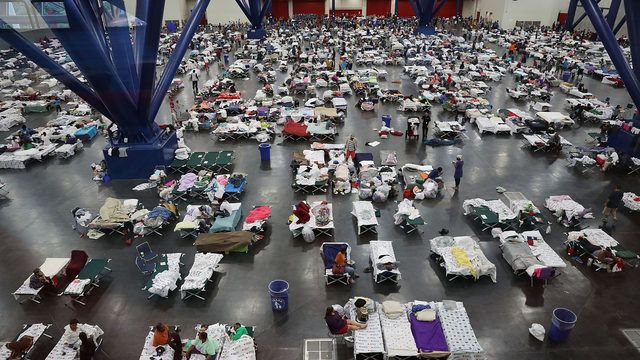
Whenever a natural disaster strikes, be it an earthquake, tornado, severe thunderstorm or a hurricane, there are relief organizations ready to help once the initial danger is over. There are those who, for whatever reason, are unable to flee the area before the disaster hits; in the case of earthquakes there is no prior warning, and for tornados, warnings are issued minutes before the storm hits. Hurricanes are different; there are usually days before a storm makes landfall, so evacuations from the strike zone are possible. Even so, there are still those who can’t, or won’t, leave when a hurricane is imminent. Hurricane Harvey was no exception; however, the landfall wasn’t the main disaster – the copious amounts of rainfall and flooding took that dubious honor. Harvey made landfall on August 26th, in Rockport, Texas as a category 4 storm, with sustained winds of 130mph.
Harvey Heads for Houston
After making landfall at Rockport, and causing severe damage in Aransas County, Harvey moved in a north-northeast direction. Downgraded to a tropical storm, Harvey stalled just inland and dumped huge amounts of rainfall on Houston. Flash flooding occurred from the heavy rainfall, and two reservoirs started a controlled release of water, to try and contain the flooding. In spite of these efforts, one reservoir reached capacity and began spilling over, increasing the areas of flooding. Houston sustained little to no wind damage, as Harvey weakened as it traveled further inland, but major areas of the city were flooded from the rainfall.
Coping with the Storm and Its Aftermath
Massive search-and-rescue efforts were mounted as the flooding increased. National Guard members were deployed, from Texas as well as other states who volunteered assistance. The Cajun Navy, an informal group out of Louisiana, traveled to Houston to assist with high-water rescues. Shelters reached capacity, and new ones opened to take the overflow. Many relief organizations provided meals, blankets, places to sleep, basic necessities, and clothing to those displaced; many arrived at the shelters with literally nothing but the clothes on their backs.
As the floodwaters recede, the relief effort goes on. Many volunteer groups are still providing meals to those who lost everything. Other groups are helping with the clean-up, giving families a hand as they cleanse their homes. The effort will take a long time, as homeowners rebuild damaged or destroyed properties. Commercial properties are also affected, and business owners require assistance as well during the process.
Large amounts of money have been raised to help Houston, but not enough to finish the job. One significant way to offer help is to donate to reputable organizations assisting in the efforts – the American Red Cross, The Salvation Army, and the United Methodist Committee on Relief (UMCOR) come to mind. A local church, Calvary Houston, has assisted in the efforts from the beginning. You can visit their website, Calvary Houston Relief, to find out how to best assist those in need. Volunteers are needed, as well as money and supplies, so contact them to make sure your help is directed to the best place.
A Long Recovery
Americans are generous to a fault; they rush in wherever they see a need after a natural disaster strikes. This is great, don’t get me wrong, but relief efforts aren’t just for the immediate aftermath. Communities – cities or rural areas alike – will spend years rebuilding after a storm like Harvey, long after the media coverage moves on to the next big story. Houston, as well as other areas affected by Harvey, has a long road ahead to full recovery. Even though linemen from power companies in other states converge to help, it will still take weeks to get everyone’s power restored. If water and sewer services were disrupted, water must be boiled until the utilities repair damaged pipes and treat the water until it’s safe to use straight from the tap. Phones, cable, and internet services will be out until the power is restored and repair crews can be dispatched. While all this is happening, displaced people still have to work (if their place of work is operating), go to school, and have a place to live while they rebuild. If their jobs are temporarily lost due to the storm, they will require financial assistance as well.
Disasters occur every year, in some part of the country and around the world. The immediate relief efforts are greatly appreciated, but it’s the folks who stick around for the long haul who deserve the real kudos. Let’s remember them, and help keep their efforts going strong – after all, it may be your turn next to need them.